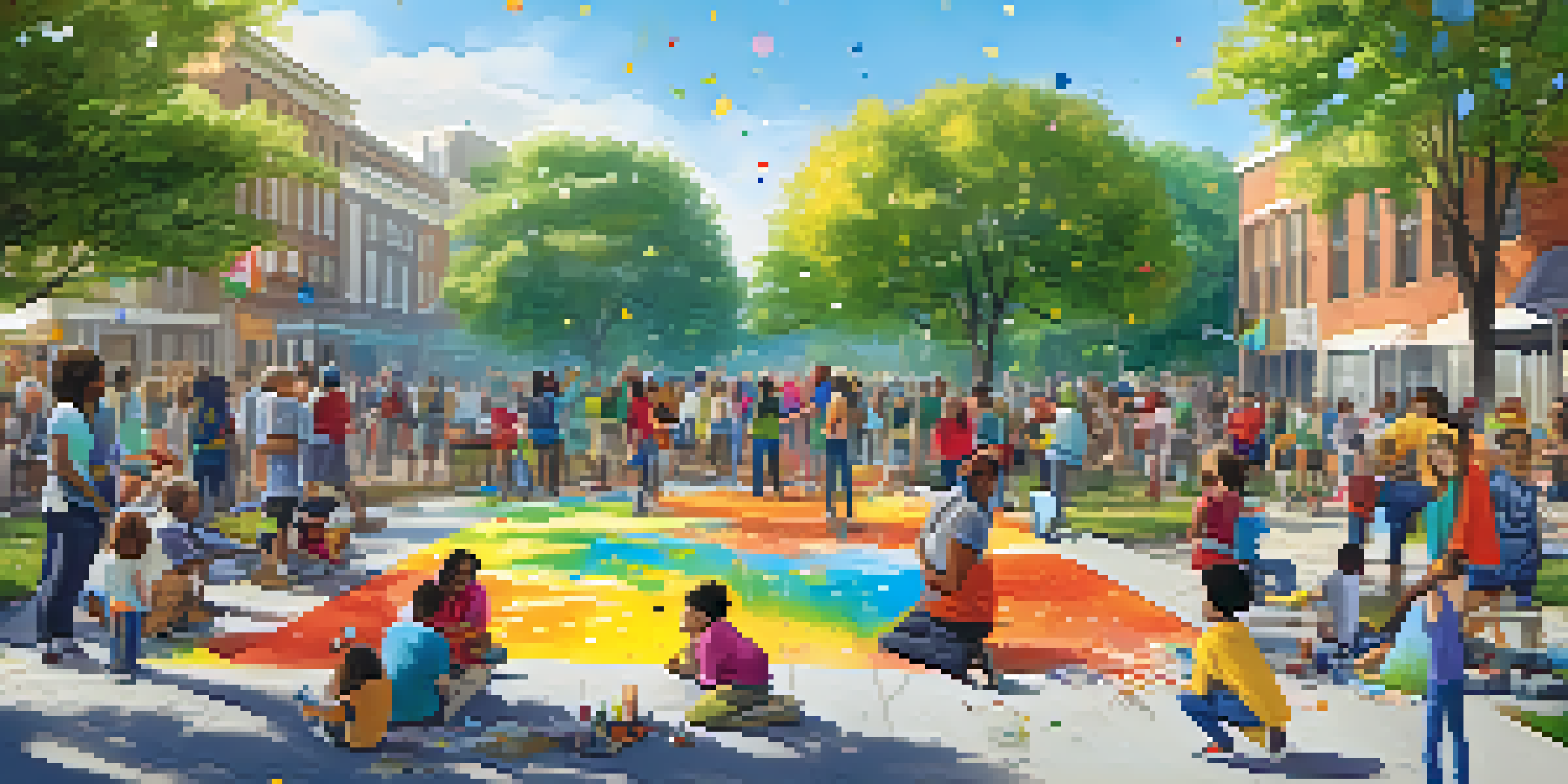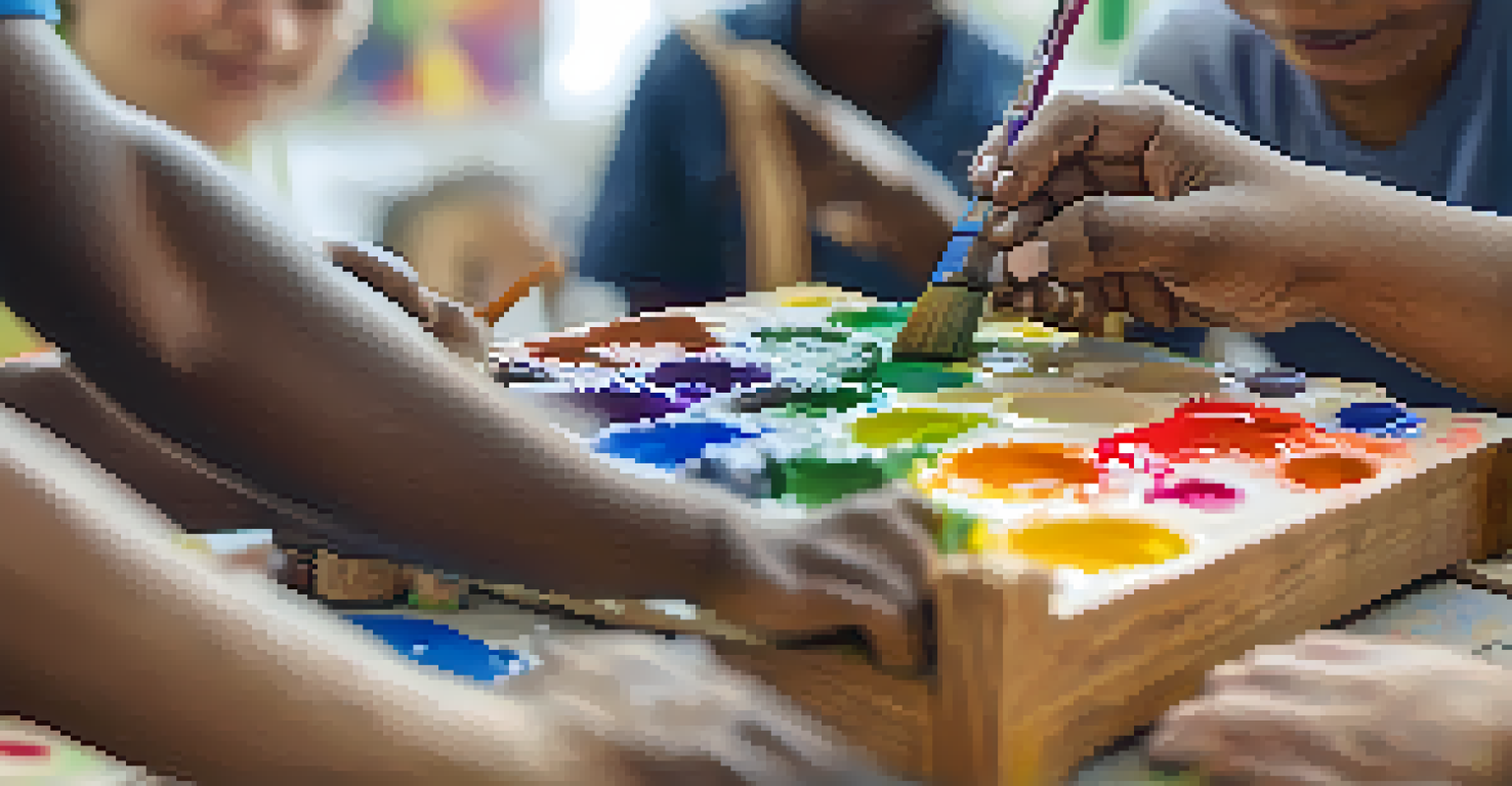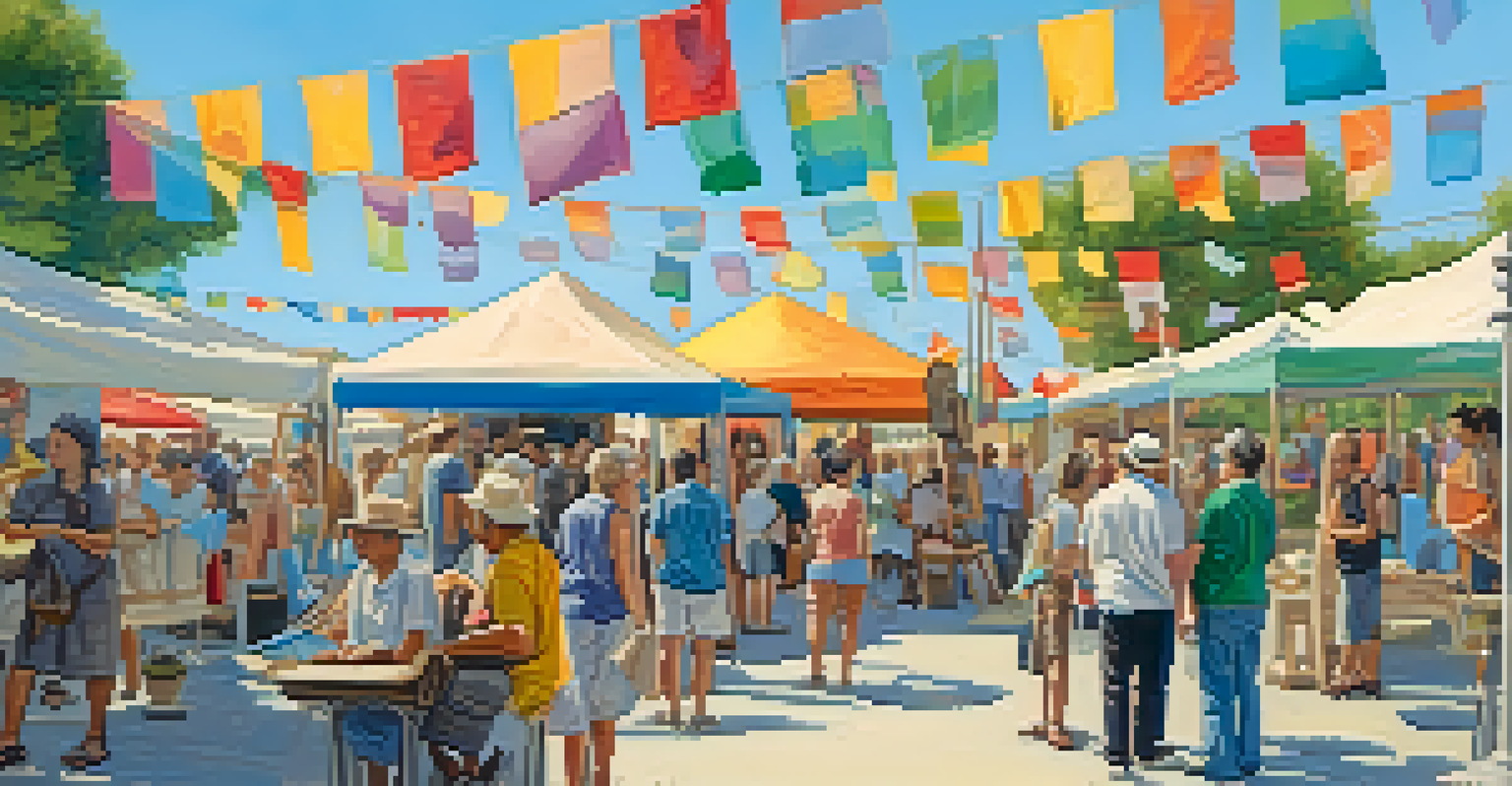Exploring the Therapeutic Benefits of Community Art Projects

Understanding Community Art Projects and Their Purpose
Community art projects bring people together to create and express themselves through various forms of art. They serve as a platform for collaboration, allowing participants to share their unique perspectives and experiences. These projects often focus on inclusivity, inviting individuals from different backgrounds to engage in the creative process and build connections.
Art enables us to find ourselves and lose ourselves at the same time.
The essence of these projects lies in their ability to foster a sense of belonging and unity among participants. By working together, individuals can break down barriers and develop a shared identity, which can be especially beneficial in diverse communities. This sense of togetherness is crucial, as it encourages emotional support and the exchange of ideas.
Moreover, community art projects can address social issues, raise awareness, and inspire action. They provide a voice for underrepresented groups, allowing them to tell their stories through art, which can lead to greater understanding and empathy within the community.
Art as a Medium for Emotional Expression
Art has long been recognized as a powerful tool for emotional expression. In community art projects, participants often find a safe space to convey their feelings, thoughts, and experiences through various artistic mediums such as painting, sculpture, or performance. This creative outlet can be particularly beneficial for individuals who may struggle to articulate their emotions verbally.

For many, engaging in art can serve as a form of therapy, helping to reduce anxiety and depression. When people immerse themselves in the creative process, they can experience a sense of flow, where their worries temporarily fade away. This immersion can lead to improved mental well-being, making art an accessible and effective coping mechanism.
Art Builds Community Connections
Community art projects foster social ties and a sense of belonging among participants from diverse backgrounds.
Additionally, sharing art with others can amplify its therapeutic effects. Participants often find comfort and validation in discussing their creations, fostering connections with fellow artists and the wider community. This shared experience can further enhance emotional healing and resilience.
Building Skills and Confidence Through Collaboration
Community art projects offer participants the opportunity to develop new skills and boost their confidence. By collaborating with others, individuals can learn various artistic techniques while also gaining insights from their peers. This exchange of knowledge encourages personal growth and fosters a sense of accomplishment.
The best way to predict the future is to create it.
As participants work together, they often take on different roles within the project, which can help them discover their strengths and interests. This process not only builds artistic skills but also cultivates teamwork and leadership abilities. These newfound competencies can extend beyond the project and positively impact participants' personal and professional lives.
Moreover, the confidence gained through collaboration can encourage individuals to take on new challenges in the future. When people recognize their potential and abilities, they are more likely to pursue further artistic endeavors or engage in other community initiatives, creating a ripple effect of empowerment.
Fostering Community Connection and Engagement
Community art projects play a vital role in strengthening social ties and fostering a sense of belonging. By bringing together diverse groups of people, these initiatives create an environment where individuals can connect over shared interests and passions. This shared experience not only enhances relationships but also promotes understanding and respect among participants.
As participants collaborate on art projects, they often find common ground, leading to meaningful conversations and friendships. These connections can help to combat feelings of isolation and loneliness, which are increasingly prevalent in today's fast-paced world. The camaraderie built through art can create a supportive network that extends beyond the project itself.
Art Enhances Mental Well-Being
Engaging in creative activities through community art projects significantly improves mental health and reduces anxiety.
Additionally, community art projects can encourage civic engagement by inspiring participants to become more involved in their neighborhoods. When individuals feel connected to their community through creative initiatives, they are more likely to contribute positively and advocate for local causes, ultimately enhancing the overall well-being of the community.
The Role of Art in Cultural Preservation
Community art projects often serve as a means of preserving cultural heritage and traditions. By incorporating elements of local history and culture into their work, participants can celebrate their identities and share their stories with others. This process not only enriches the artistic experience but also fosters a sense of pride in one's roots.
Through art, communities can document significant events, cultural practices, and shared values, ensuring that future generations remain connected to their history. By engaging in these projects, participants contribute to a living legacy that honors their heritage while also embracing contemporary artistic expressions.
Furthermore, cultural preservation through art can promote intergenerational dialogue, as older community members share their experiences with younger generations. This exchange of knowledge and traditions helps to bridge the gap between ages, fostering mutual respect and understanding while reinforcing the importance of community identity.
Enhancing Mental Health and Well-Being
Numerous studies have shown that engaging in creative activities can significantly improve mental health and well-being. Community art projects provide an accessible avenue for individuals to tap into their creativity, which can lead to reduced symptoms of anxiety and depression. By focusing on the creative process, participants often find relief from their daily stressors and an increased sense of joy.
Moreover, the act of creating art can stimulate the release of endorphins, the body's natural feel-good chemicals. This biological response can enhance mood and foster a greater sense of fulfillment. When participants experience this boost in mental well-being, they are more likely to engage in other positive activities and nurture their overall health.
Cultural Heritage Through Art
These projects help preserve cultural heritage by allowing individuals to celebrate their identities and share their stories.
Additionally, participating in community art projects can help individuals develop coping strategies for managing their mental health. By learning to express themselves creatively, participants can navigate their emotions more effectively and find healthier outlets for stress, ultimately leading to a more balanced and fulfilling life.
The Lasting Impact of Community Art Projects
The benefits of community art projects extend far beyond the immediate experience of creation. Participants often carry the skills, connections, and confidence gained through these initiatives into their daily lives, influencing their personal and professional interactions. These projects can spark a sense of ongoing creativity and inspire individuals to pursue further artistic endeavors.
Moreover, the positive changes fostered by community art projects can have a ripple effect throughout the community. As individuals become more engaged and empowered, they are likely to contribute to additional initiatives and support local causes. This engagement can lead to the development of a vibrant arts culture that enriches the community as a whole.

Ultimately, the lasting impact of community art projects is a testament to the power of creativity in bringing people together and fostering healing. By prioritizing collaboration, emotional expression, and cultural preservation, these initiatives create a legacy of connection and growth that can be felt for generations to come.